Are you a Quiet Speculation member?
If not, now is a perfect time to join up! Our powerful tools, breaking-news analysis, and exclusive Discord channel will make sure you stay up to date and ahead of the curve.
Greetings, Nexites. For this week's Deck of the Week segment I'm taking over from Rob, but you can expect him back in full force next week. Last weekend was an interesting one for Modern, as we saw an old fringe deck put up not one, but three finishes in high-level MTGO tournaments. I'm talking, of course, about the much maligned and polarizing Bogles. Coming more or less from out of nowhere, it put two pilots in the Top 8 of the Modern Challenge, and qualified one player for Pro Tour Rivals of Ixalan with a Top 8 berth in the MTGO Regional PTQ.
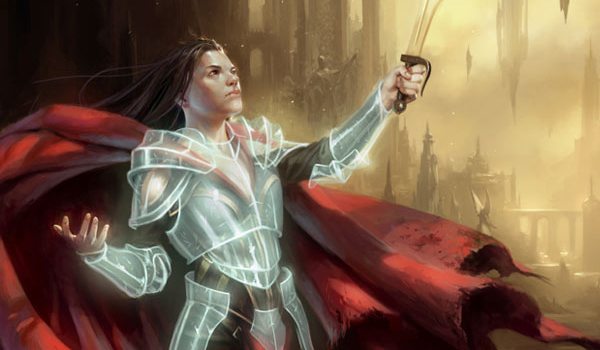
It's been a while since we've seen much of Bogles—much less multiple finishes in a single weekend—and this outcome might be a clue about the current metagame's effect on deck choice. The newer Bogles versions seem to have adopted some interesting tech, which I'm guessing is instrumental to their success. Take a look at the qualifying decklist from the Regional PTQ, which was typical of the bunch.
Bogles, by filippidis (Top 8, MTGO Regional PTQ, 11/25/17)
As a person who has been playing a lot of Gifts Storm of late, I can say this deck looks downright scary. It's absolutely packed to the brim with answers to Storm, and it seems well geared against the other consensus best deck, Death's Shadow. Unlike Humans, the other anti-Storm deck that's cropped up of late, this deck looks to have strong natural positioning against both of the top decks in the meta—not a bad place to be.
I'm no expert on the exact configuration of Bogles over the years, but there are some interesting card choices across the three builds that represent at least a partial evolution of the archetype.
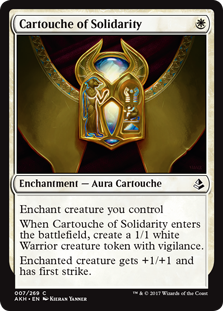 Cartouche of Solidarity. This is clearly a (relatively) new adoption by Bogles, seeing as the card itself is only about a year old. Much like its creature-combo brethren Infect and Death's Shadow, Bogles often struggles with a painfully low threat count. Each of these decks has a different way of mitigating this problem. Infect and Bogles attempt to protect their creatures (via instants and hexproof, respectively), while Death's Shadow has several library manipulation and recursion tools that let it run extra virtual copies of its threats. Of these, Death's Shadow is probably the best at addressing the issue—cantrips and card advantage tend to do that—whereas Infect and Bogles have traditionally struggled with it more. When creatures die, there aren't many more to be found.
Cartouche of Solidarity. This is clearly a (relatively) new adoption by Bogles, seeing as the card itself is only about a year old. Much like its creature-combo brethren Infect and Death's Shadow, Bogles often struggles with a painfully low threat count. Each of these decks has a different way of mitigating this problem. Infect and Bogles attempt to protect their creatures (via instants and hexproof, respectively), while Death's Shadow has several library manipulation and recursion tools that let it run extra virtual copies of its threats. Of these, Death's Shadow is probably the best at addressing the issue—cantrips and card advantage tend to do that—whereas Infect and Bogles have traditionally struggled with it more. When creatures die, there aren't many more to be found.
Cartouche does a great job of helping ameliorate this problem, while still playing well in Bogles's core game plan. Of course, if you haven't drawn any creatures at all you're still out of luck, but the Cartouche ensures you have extra bodies to suit up to spread out damage, and acts as a natural counter to edict effects. The lists by filippidis and Elfkid only ran a one-of, but Modern Challenge finalist Dreamcrusher119 elected to go up to the full playset. I'm interested to see which of these tacks becomes the standard.
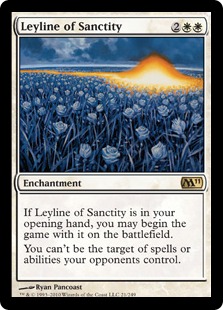 Leyline of Sanctity. Speaking of edict effects, those maindeck Leylines seem to be working overtime in this strategy. The obvious application is clearly to shut off Grapeshot, but it also does a great job of protecting versus black control elements. Both Thoughtseize and Liliana of the Veil don't play with a Leyline out, which means the lone threat you had to mulligan to find stays firmly in hand, and won't fall to a Lili minus. As a Storm player, seeing these in the maindeck is the scariest aspect of the list. We can theoretically counter with our own maindeck Empty the Warrens or Echoing Truth, but too much of that will dilute our game-one advantage. I would say jamming white Leylines randomly into most decks is a suspect strategy at best, but in Bogles, where the card shores up several weak points at once, it seems like an excellent meta call.
Leyline of Sanctity. Speaking of edict effects, those maindeck Leylines seem to be working overtime in this strategy. The obvious application is clearly to shut off Grapeshot, but it also does a great job of protecting versus black control elements. Both Thoughtseize and Liliana of the Veil don't play with a Leyline out, which means the lone threat you had to mulligan to find stays firmly in hand, and won't fall to a Lili minus. As a Storm player, seeing these in the maindeck is the scariest aspect of the list. We can theoretically counter with our own maindeck Empty the Warrens or Echoing Truth, but too much of that will dilute our game-one advantage. I would say jamming white Leylines randomly into most decks is a suspect strategy at best, but in Bogles, where the card shores up several weak points at once, it seems like an excellent meta call.
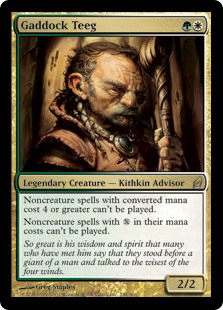 Gaddock Teeg. The sideboard of all three of these lists is clearly built with Storm in mind, and nowhere is this more apparent than in the inclusion of the classic Kithkin Advisor. Teeg's traditional job has always been to shut down Wrath effects, but Bogles is usually not hard-pressed to beat true control strategies like Jeskai or Esper. To my eyes, what those three copies say is, "I don't want my opponent casting Gifts Ungiven or Past in Flames." No doubt he can still come in against the hapless control player to make that matchup even more miserable, and he might also have reasonable applications against stuff like Scapeshift, Ad Nauseam, or Through the Breach.
Gaddock Teeg. The sideboard of all three of these lists is clearly built with Storm in mind, and nowhere is this more apparent than in the inclusion of the classic Kithkin Advisor. Teeg's traditional job has always been to shut down Wrath effects, but Bogles is usually not hard-pressed to beat true control strategies like Jeskai or Esper. To my eyes, what those three copies say is, "I don't want my opponent casting Gifts Ungiven or Past in Flames." No doubt he can still come in against the hapless control player to make that matchup even more miserable, and he might also have reasonable applications against stuff like Scapeshift, Ad Nauseam, or Through the Breach.
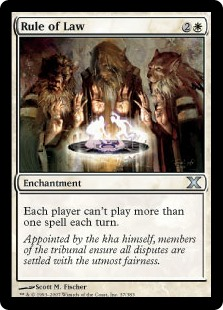 Rule of Law. White's status as best sideboard color in Modern is well known, and all three lists include typical fare like Rest in Peace and Stony Silence. Elfkid's third-place deck in the Modern Challenge ran Rule of Law as well. Did I mention I don't want to face this as a Gifts Storm pilot?
Rule of Law. White's status as best sideboard color in Modern is well known, and all three lists include typical fare like Rest in Peace and Stony Silence. Elfkid's third-place deck in the Modern Challenge ran Rule of Law as well. Did I mention I don't want to face this as a Gifts Storm pilot?
I'll be honest—when I first heard Bogles had dominated the weekend's MTGO events, I was skeptical of its staying power. But looking over these lists and thinking more carefully about how they might play against the two format boogeymen (Storm and Shadow), I'm a little heartened by its chances.
However, as with Humans from a month ago, I question if this archetype has the raw power and resiliency to compete in a large-round, open event like a Grand Prix. Remember, on Magic Online metagames are more predictable, an effect we can expect to be even more pronounced in large-scale tournaments like PTQs and Challenges. Showing up with a lower-tier deck tailored to beat specific matchups is appealing in an environment like this, but I'd caution against applying a similar tactic to GP Oklahoma City.
But then, I've been wrong before. Bogles has certainly had its proponents over the years. What are your thoughts?



